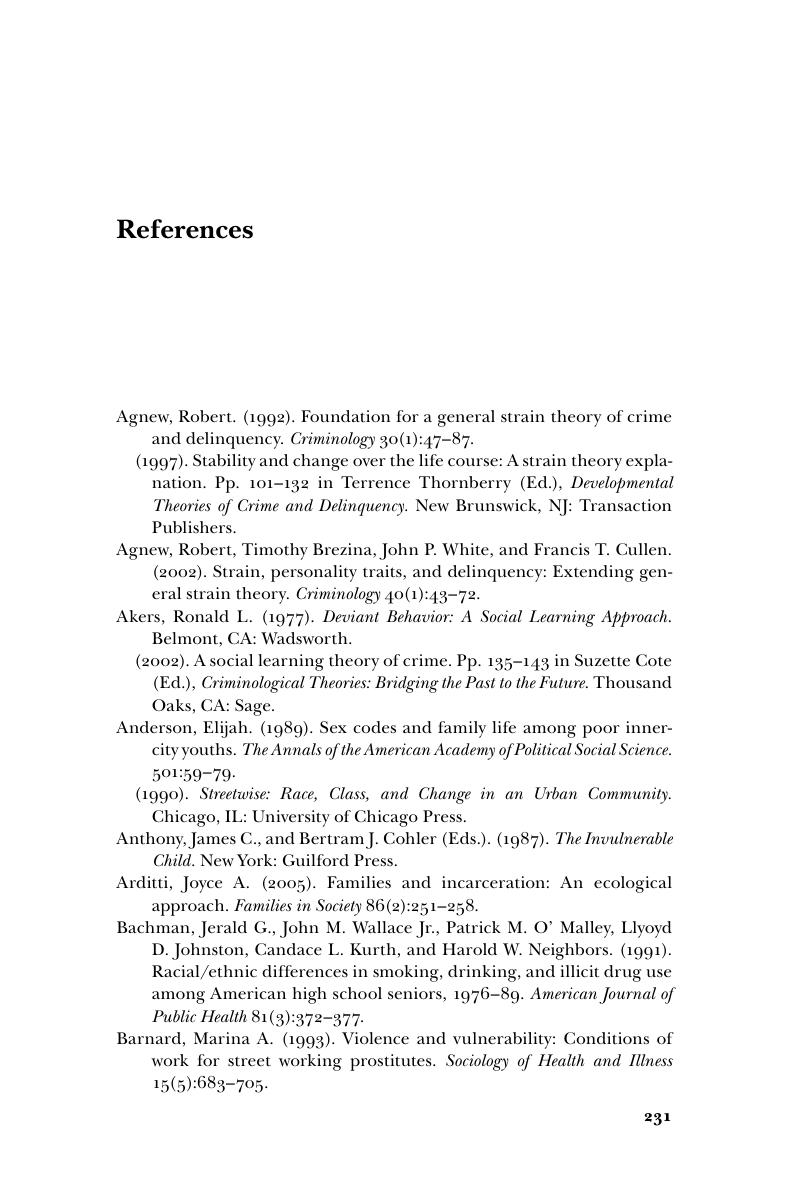Book contents
- Frontmatter
- Contents
- Acknowledgments
- 1 Introduction
- 2 Literature Review and Conceptual Framework
- 3 The Ohio Life-Course Study
- 4 OLS Adult Respondents: Offending, Surviving, Parenting
- 5 How Have the OLS Children Fared?
- 6 The Intergenerational Transmission Process
- 7 “Success Stories”: It's All Relative
- 8 Theoretical and Policy Implications of the OLS Study
- References
- Index
- References
References
Published online by Cambridge University Press: 05 June 2012
- Frontmatter
- Contents
- Acknowledgments
- 1 Introduction
- 2 Literature Review and Conceptual Framework
- 3 The Ohio Life-Course Study
- 4 OLS Adult Respondents: Offending, Surviving, Parenting
- 5 How Have the OLS Children Fared?
- 6 The Intergenerational Transmission Process
- 7 “Success Stories”: It's All Relative
- 8 Theoretical and Policy Implications of the OLS Study
- References
- Index
- References
Summary

- Type
- Chapter
- Information
- Legacies of CrimeA Follow-Up of the Children of Highly Delinquent Girls and Boys, pp. 231 - 244Publisher: Cambridge University PressPrint publication year: 2010

